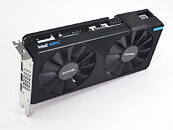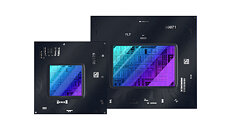
Resizable-BAR a Must for Arc "Alchemist," Stick with Other Vendors if you Lack it: Intel
The PCI resizable-BAR feature is an absolute must for Intel Arc "Alchemist" graphics cards to perform as advertised, to the extent that Intel recommends sticking to "other vendors" (NVIDIA, AMD), for those on machines that lack resizable-BAR or prefer it disabled. In our testing of the Arc A380, we found a big performance gap between resizable-BAR being enabled and disabled. The company said that while it is working on driver optimizations that improve performance for machines lacking resizable-BAR, its general advice for those on older platforms is to stick with other vendors.
Resizable-BAR enables the software to see the entire video memory of a graphics card as a single large addressable block, rather than through 256 MB apertures. AMD and NVIDIA's driver architectures have optimized their memory-management to cope with these apertures through the advent of PCI-Express, but Intel Arc hasn't. Its memory-management model relies on large bursts of memory transfers, for which it needs resizable-BAR. The performance penalty for lacking it could be as high as 40 percent. In related news, Intel Graphics confirmed that the Arc A770 will be available both in 16 GB and 8 GB memory variants at launch—which is still slated for Soonuary, 2022.
Resizable-BAR enables the software to see the entire video memory of a graphics card as a single large addressable block, rather than through 256 MB apertures. AMD and NVIDIA's driver architectures have optimized their memory-management to cope with these apertures through the advent of PCI-Express, but Intel Arc hasn't. Its memory-management model relies on large bursts of memory transfers, for which it needs resizable-BAR. The performance penalty for lacking it could be as high as 40 percent. In related news, Intel Graphics confirmed that the Arc A770 will be available both in 16 GB and 8 GB memory variants at launch—which is still slated for Soonuary, 2022.

























































